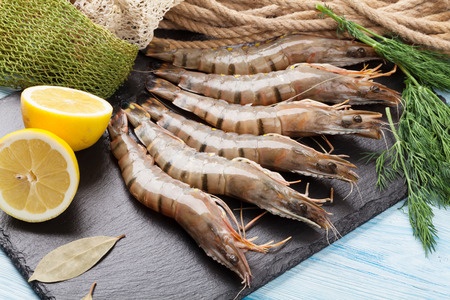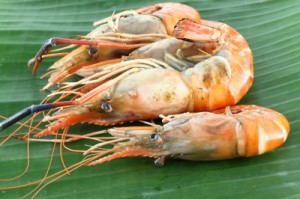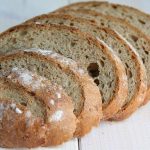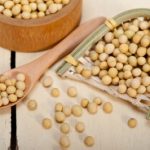
The seafood industry generates a large amount of biodegradable waste and none more so than shrimp and prawns. It is not surprising that with such a rich source of waste material available, that methods to maximise its potential are not being exploited more. Waste shrimp offers a golden opportunity for anybody in the seafood industry looking to capitalise on what is an increasingly valuable, cheap material.
The author read with interest an article which briefly described the use of supercritical carbon dioxide extraction of Northern Shrimp (Pandalus borealis Kreyer) waste to produce a rich source of omega-3 polyunsaturated fatty acids, mainly 7.8 % eicosapentaenoic acid (EPA) and 8% docosahexaenoic acid (DHA) which are both important nutritionally (Amiguet et al., 2011). It seems the heads, tails and shells constitute 50-60% of the whole catch which is not surprising given the amount of waste left when shelling prawns or shrimps for cooking. In fact, 5% of the shrimp waste is currently used, mainly as animal feed whilst the rest presents an increasing environmental issue. It is a highly perishable feedstock and seasonal too.

Waste Shrimp Can be Composted And Fermented
Shrimp waste has also been composted and turned into a silage (ensilation) to help recover chitin, pigments and enzymes. Two processes exist: -Lactic acid bacteria work effectively with carbon sources based on glucose to provide the necessary fermentation medium (Shirai et al., 2001). The alternative is to hydrolyse using mineral acids. Lactic acid fermentation which is a common process in pickling foods is also popular for chitin recovery. Chitin has applications in both food, cosmetics, medicines and waste water treatment. Chitosan which is derived from chitin is also used as an antimicrobial, in edible films and in weight management. The protein and calcium is removed by enzymic activity and solubilisation of calcium in organic acids produced (Shirai et al., 1997; Zakira et al., 1998). Waste reactors have been designed to maximise fermentation (Cira et al., 2002) using sucrose as the carbohydrate source.
What To Do With Shrimp Waste Proteins
The residual waste proteins can also be recovered either through chitosan/chitin preparation or by hydrolysis using proteases such as Alcalase (Gildberg and Stenberg, 2001). In this process the quality of the protein hydrolysate was complementary to other similar processed forms. It did not affect chitosan production which is usually wasteful of other protein sources. The total recovery of Kjeldahl nitrogen was 68.5% compared to 12.8% using conventional recovery methods and was being touted as a feed for salmon or in cosmetics.
References
Amiguet, V.T., Kramp, K.L., Mao, JQ., McRae, C., Goulah, A., Kimpe, L.E., Blais, J.M., Arnason, J.T. (2011) Supercritical carbon dioxide extraction of polyunsaturated fatty acids from Northern shrimp (Pandalus borealis Kreyer) processing by-products. Food Chem. 130 (4) pp. 853-858
Beaney, P., Lizardi-Mendoza, J., Healy, M.,(2005). Comparison of chitins produced by chemical and bioprocessing methods. J. Chem. Technol. Biotechnology 80, pp. 145–150.
Cira, L.A., Huerta, S., Hall, G.M. and Shirai, K. (2002) Pilot scale lactic acid fermentation of shrimp wastes for chitin recovery. Process Biochemistry 37 pp. 1359–1366
Gildberg, A., Stenberg, E. (2001) A new process for advanced utilisation of shrimp waste. Process Biochem. 36 (8-9) pp. 809-812
Hirano, S. (1999) Chitin and chitosan as novel biotechnological materials. Polym. Int. 48(8) pp. 732 -734.
Shahidi, F., Synowiecki, J. (1991) Isolation and characterization of nutrients and value-added products from snow crab (Chinoecetes opilio ) and shrimp (Pandalus borealis ) processing discards. J. Agric Food Chem 39 pp. 1527 – 1532.
Shirai, K., Guerrero, I., Huerta, S., Saucedo, G., Gonzalez, R.O., Castillo, A. and Hall, G.M. (2001) Effect of initial glucose concentration and inoculation level of lactic acid bacteria in shrimp waste ensilation. Enzyme Microbial Technology, 28 pp. 446-452.
Shirai, K., Guerrero, I., Huerta, S., Saucedo, G., Rodriguez, G., Hall, G.M. (1997) Aspects in protein breakdown during the lactic acid fermentation. In: Advances in Chitin Science, vol. II. Domard, A., Roberts, G.A.F., Varum, K.M, editors. Lyon: Jaques Andre Publisher, pp. 56-63.
Zakaria, Z., Hall, M., Shama, G. (1998) Lactic acid fermentation of scampi waste in a rotating horizontal bioreactor for chitin recovery. Process Biochem 33(1) pp. 1–6.



Leave a Reply